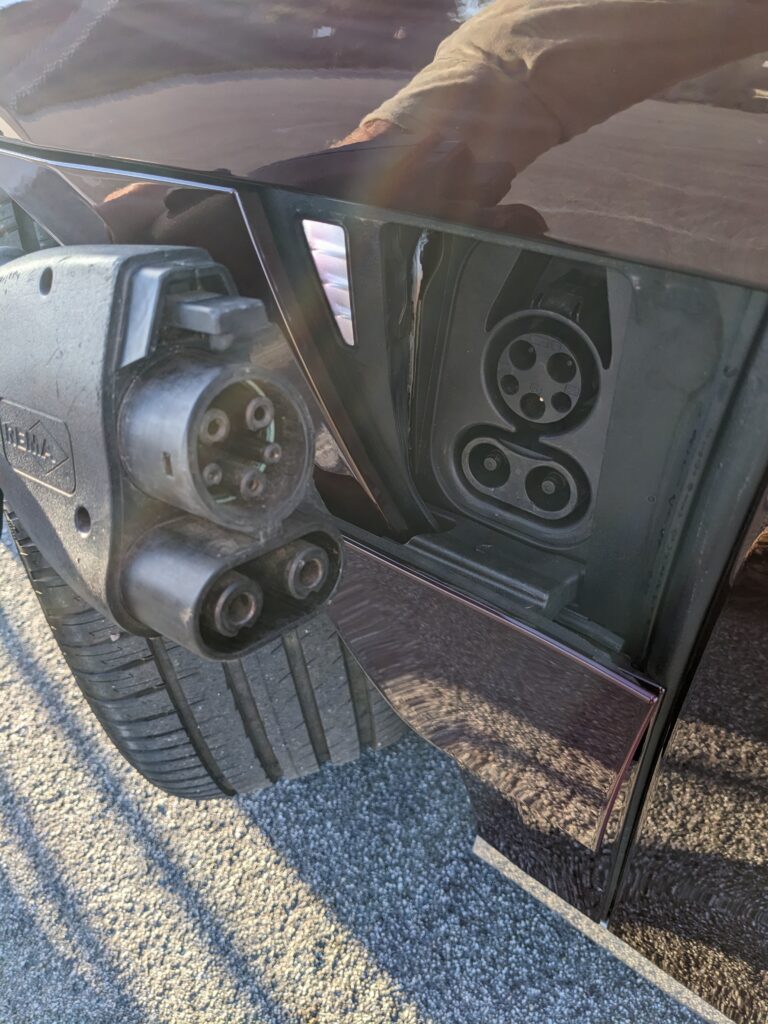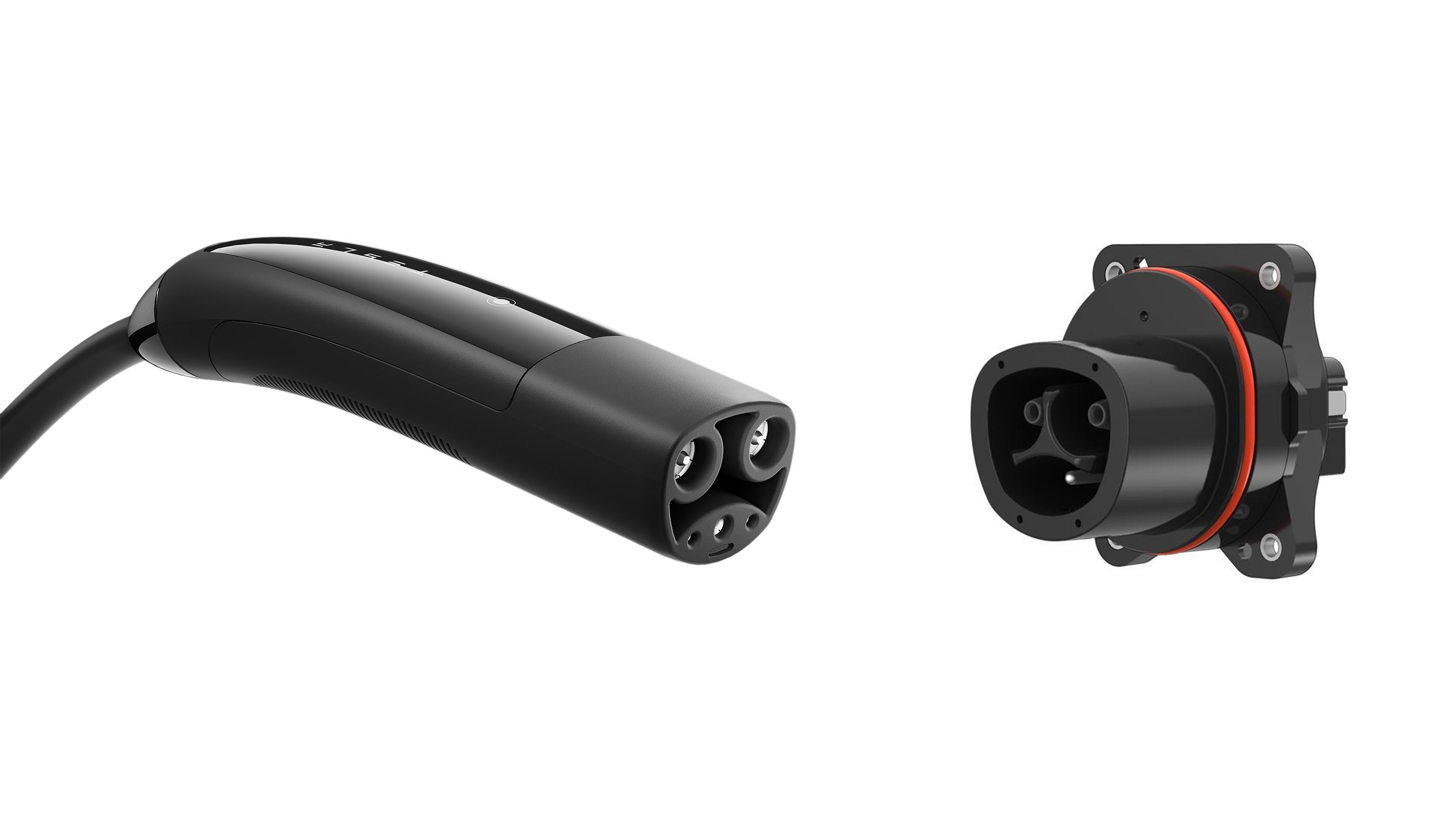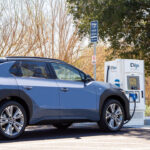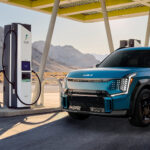General Motors has announced a collaboration with Tesla, which will result in a switch from the Combined Charging System (or CCS1) charging connector to Tesla’s North American Charging Standard (NACS) connector in new EVs in North America.
This major move follows and mirrors Ford’s agreement with Tesla related to the same topic – the use of the NACS charging connector for AC and DC charging, including access to the Tesla Supercharging network (currently some 12,000 stalls and counting).
An essential item of note is that software-wise, Supercharging access will be offered within GM’s domain, as GM will integrate Tesla’s app into its system:
“GM will also integrate the Tesla Supercharger Network into its vehicle and mobile apps, helping drivers quickly and easily locate, pay for, and initiate charging at available Tesla Superchargers. This will complement the charging experience at the growing Ultium Charge 360 Network of charging stations, as well as additional charging stations GM makes available through existing integrations with other charging networks.”
In the future, an opposite CCS1-to-NACS adapter will be provided for the new NACS-compatible EVs, so they can connect to CCS1 chargers. This type of adapter is already used by Tesla for its own electric cars.
Of course, with the switch to NACS, customers will have to ensure they have a NACS-compatible home charging unit (or adapters to the SAE J1772 connector), but that’s a minor, temporary issue during the transition period.
Overall, as of today, it seems that Tesla has successfully managed to convince two heavy-weight automotive groups –GM and Ford– to its proprietary NACS charging connector, which is intended to be opened for the industry in North America.
As we understand it, the NACS will gradually replace the CCS1 in North America (and potentially some other markets, like South Korea), while the connector will be released for conventional use so that other companies will be able to manufacture parts or chargers that comply with the NACS. In another scenario (very unlikely), manufacturing and distribution would have to go through Tesla, which owns the rights. With GM set to adopt Tesla’s NACS connector, we can only imagine that other manufacturers may soon follow suit.
The CCS standard is expected to continue to be the primary solution in most of the rest of the world via its European CCS2 versions (based on the three-phase Type 2 plug).

A DCFC CCS Type 1 plug and socket. Note the “two extra pins” at the bottom of what looks like a normal J-plug. Those are used for the DC current that charges the car when used with this type of plug. In 2023, most non-Tesla EVs in North America use this type of socket, accepting both the J-plug (Level 1 & 2 AC charging) and the CCS plug (DCFC). Photo credit: John Higham
Meanwhile, General Motors will continue its investments in charging infrastructure (including CCS1 chargers):
“GM continues to work with others in the industry to accelerate the installation of home, work and public charging as part of its Ultium Charge 360 initiative. This includes collaborations with Pilot Company and EVgo that will add more than 5,000 DC fast chargers to the nearly 13,000 existing DC fast chargers in North America, as well as the deployment of community chargers throughout the U.S. and Canada.”
GM Chair and CEO Mary Barra said:
“Our vision of the all-electric future means producing millions of world-class EVs across categories and price points, while creating an ecosystem that will accelerate mass EV adoption. This collaboration is a key part of our strategy and an important next step in quickly expanding access to fast chargers for our customers. Not only will it help make the transition to electric vehicles more seamless for our customers, but it could help move the industry toward a single North American charging standard.”
Rebecca Tinucci, Tesla’s Senior Director of Charging Infrastructure, added:
“Our mission is to accelerate the world’s transition to sustainable energy. Giving every EV owner access to ubiquitous and reliable charging is a cornerstone of that mission. We’re excited to work with other industry leaders like General Motors to provide access to the Tesla Supercharger Network via the North American Charging Standard.”









Tom, what do you think will become of Chevy Bolt/EUV as far as charging on Tesla Superchargers? Bolts can already charge on Superchargers equipped with Magic Dock adapters without any firmware updates. Will GM’s design for its internal Ultium ecosystem interfere with Bolts’ ability to Supercharge with an adapter?
And do you think Tesla will continue to roll out Magic Docks given the latest Ford/GM news?
Hi Phil — We suspect Tesla will slow or stop its deployment of the magic dock. Aside from that, The Bolt will have the access it has now until the adapter that the press releases described becomes available.
Beyond that is anyone’s guess.